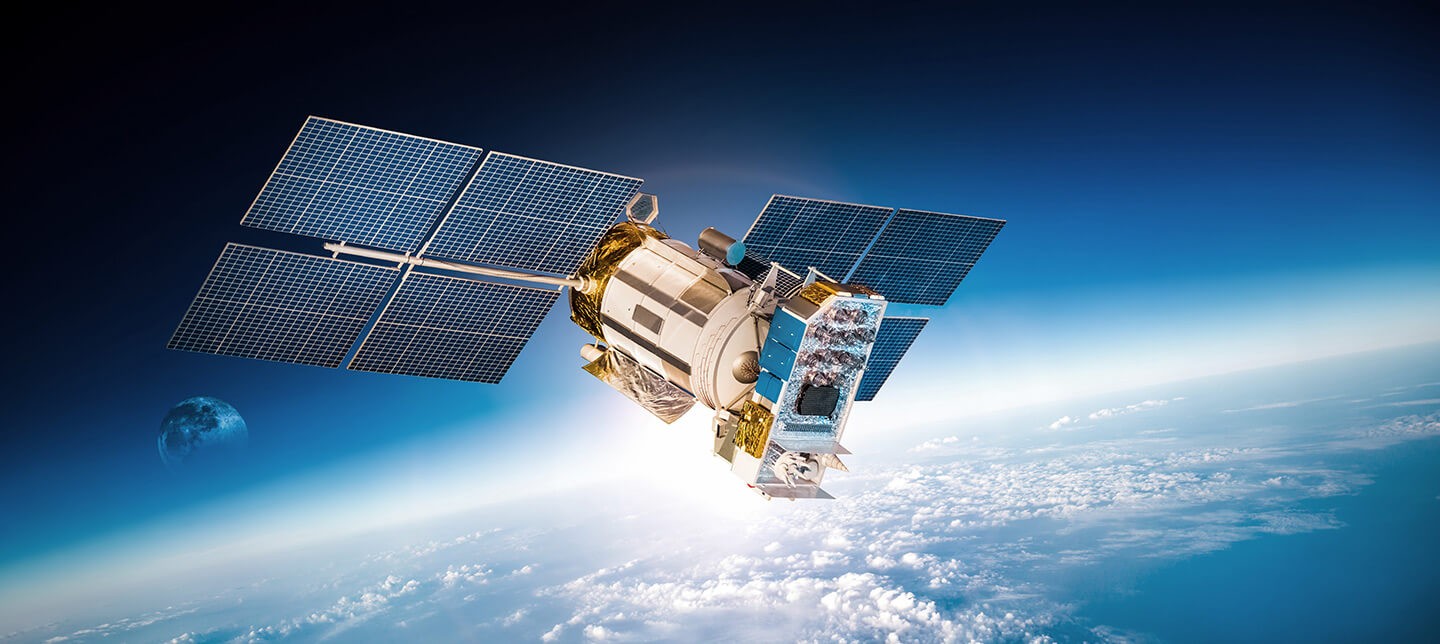Types of NTNs
Satellite Communication Networks
NTNs use spaceborne platforms, which include satellites in various Earth orbits. LEO satellites operate at altitudes of around 1,200 to 2,000 km above the Earth's surface, providing low-latency communication. LEOs require many satellites for global coverage. MEO satellites operate at altitudes of around 10,000 to 20,000 km, offering a balance between coverage and latency. GGEO satellites operate at altitudes of around 36,000 km, providing global coverage with a small number of satellites but at the cost of higher latency.
High Altitude Platform Systems (HAPS)
HAPS are airborne platforms that operate at altitudes of around 20 to 50 kilometers. These platforms can include airplanes, balloons, and airships. High Altitude Platform Stations (HIBS) serve as International Mobile Telecommunications base stations, providing connectivity to areas that are difficult to reach with terrestrial networks or satellites. HAPS can provide persistent coverage over a specific area, making them ideal for applications such as disaster recovery, environmental monitoring, and broadband connectivity in remote areas.
Air-to-Ground Networks
These networks aim to provide in-flight connectivity for airplanes by utilizing ground stations, which play a similar role as base stations in terrestrial mobile networks. The antennas of the ground stations in an air-to-ground network are tilted toward the sky, and the intersite distances of the ground stations are much larger than that of terrestrial mobile networks. This configuration allows for high-speed data transmission to and from aircraft, enabling passengers to stay connected during their flights.
In addition to these three main types, Non-Terrestrial Network - Internet of Things (NTN-IoT) and Non-Terrestrial Network - New Radio (NTN-NR) are two aspects of NTNs that address different use cases and markets.
NTN-IoT expands the reach of IoT use cases, enabling true global coverage over land, sea, and air. It operates at both GEO and LEO altitudes, but current services mostly operate at GEO. NTN-IoT devices are designed to enable seamless communication and data exchange, and they typically feature low power consumption, optimized network protocols, and support for various IoT communication technologies such as Narrowband IoT (NB-IoT) or Long-Term Evolution for Machines (LTE-M).
On the other hand, NTN-NR is the next phase of NTN technology. It will directly link smartphones and other 5G devices with satellite-based services. NTN-NR will operate at the LEO altitude and enable low data services, voice, and messaging for various use cases. NTN-NR devices include smartphones, tablets, laptops, and other mobile devices equipped with 5G NR modems or chipsets. These devices use a larger bandwidth than NTN-IoT devices.
The key difference between NTN-IoT and NTN-NR lies in their target devices and bandwidth utilization. While NTN-IoT focuses on IoT devices and operates at both GEO and LEO altitudes, NTN-NR targets 5G devices like smartphones and operates only at the LEO altitude. Furthermore, NTN-NR devices utilize a larger bandwidth than NTN-IoT devices, offering increased throughput and operating over an extended spectrum.
Nonterrestrial Network Use Cases
Each NTN use case leverages the unique capabilities of NTNs to provide connectivity in scenarios where terrestrial networks may not be sufficient or available.
Precision Agriculture
NTNs support precision agriculture by enabling real-time data collection and analysis from various sensors deployed in the field. This data can help farmers monitor soil moisture, weather conditions, and crop health, leading to more efficient use of resources and improved crop yields.
Emergency Communications
In the event of natural disasters, regional conflicts, or network outages, NTNs can provide backup connectivity. This connectivity is crucial for coordinating rescue efforts, delivering emergency services, and maintaining communication when terrestrial networks are compromised.
Connected Vehicles
NTNs can enhance the connectivity of vehicles, including cars and trucks. This data can facilitate real-time traffic updates, vehicle diagnostics, and advanced safety features. Furthermore, it can support vehicle-to-vehicle and vehicle-to-infrastructure communication, which are key for autonomous driving.
Maritime Communications
Significant improvements in connectivity within maritime environments are achievable through the deployment of NTNs. By enhancing navigation, tracking, and communication capabilities for ships at sea, these networks contribute to safer and more efficient maritime operations.
Airborne Communications
NTNs can provide connectivity for airborne platforms, such as drones and airships,for applications from cargo delivery and aerial surveys to emergency response.
IoT Connectivity
By expanding the reach of IoT use cases, NTNs enable global coverage across land, sea, and air. Such expansion supports a wide range of applications, including asset tracking, remote monitoring, and environmental sensing, by facilitating connectivity in previously inaccessible areas.
Broadband Access in Remote Areas
Delivering high-speed wireless access to remote areas underserved by terrestrial networks, NTNs play a crucial role in bridging the digital divide and promoting digital inclusion. This service enhances connectivity in regions where traditional infrastructure is lacking, ensuring broader access to digital resources and services.
Obstacles to NTN Adoption
The widespread adoption of NTNs faces several challenges:
- Technical Challenges—The large distances involved in NTN communication result in issues such as time-varying path delay, large Doppler shifts from rapidly moving satellites, and signal attenuation. These factors, combined with a greater susceptibility to interference, present significant challenges for NTN design engineers.
- Network Design:—Proper network design is challenging, including issues associated with latency and coverage constraints.
- Cost—Deploying and maintaining NTNs, particularly satellite constellations, can be expensive. This cost includes manufacturing, launching, and operating satellites, as well as the cost of ground infrastructure.
- Regulatory and Legal Issues—NTNs operate in a complex international regulatory environment. Issues such as spectrum allocation, licensing, and coordination among different countries can pose significant challenges.
- Integration with Terrestrial Networks —Integrating NTNs with existing terrestrial networks can be complex, requiring advanced antenna systems and network architectures.
- Energy Consumption—Network densification, a potential solution to increase network resiliency, could lead to an energy crunch with serious economic and environmental concerns.
Addressing these challenges requires further research and innovative solutions.
NI and the Future of Telecommunications Networks
NI is at the forefront of NTN network test by revolutionizing the design and testing landscape for NTNs. We provide indispensable support that significantly enhances satellite communication systems. Through the integration of advanced methodologies and cutting-edge technology, NI focuses on ensuring signal integrity, robust connectivity, and the agility to adapt to the continuously evolving standards of satellite communications.
One of the key tools NI offers is the PXI Vector Signal Transceiver (VST), which combines an RF and baseband vector signal analyzer and generator with a user-programmable FPGA. This instrument provides high-speed serial and parallel digital interfaces for real-time signal processing and control from baseband to mmWave. The VST is crucial for measuring NTN performance with its wider bandwidth, increased frequency, and improved RF metrics.
NI's technologies are pivotal in overcoming the challenges associated with developing and deploying satellite networks that are both cost-effective and capable of delivering global connectivity. As the telecommunications industry advances towards the integration of 5G and beyond, the role of NI in accelerating the testing and deployment of next-generation nonterrestrial networks becomes increasingly crucial, highlighting their significant impact on the future of global telecommunications infrastructure.
Next Steps:
To understand the current NTN landscape, discover emerging applications, tackle the technical challenges, and learn about NI’s pivotal role in the design, development, and implementation of satellite communications, read our Nonterrestrial Networks (NTN) for 5G and Beyond white paper.
---
Sources:
5G and Non-Terrestrial Networks
Differences Between Satellite and Terrestrial Communication Based Systems
5G from Space: An Overview of 3GPP Non-Terrestrial Networks
Non-Terrestrial Networks in the 6G Era: Challenges and Opportunities
NB-IoT Random Access for Non-Terrestrial Networks: Preamble Detection and Uplink Synchronization
The Rise of Non-Terrestrial Networks and 5G Hybrid Architectures
Networking Challenges for Non-Terrestrial Networks Exploitation in 5G




